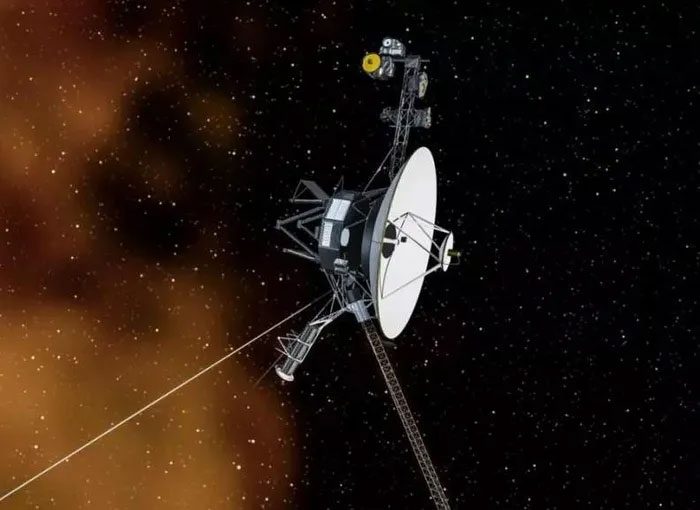The interstellar spacecraft Voyager 1 had to rely on an old frequency transmitter to communicate with NASA after experiencing a signal loss.
In October, NASA lost contact with the Voyager 1 spacecraft due to a malfunction in its signal transmission system. The disruption began on October 16 when NASA sent a command to the spacecraft, requesting it to activate one of its heaters. However, the spacecraft’s electronics did not respond to the command from Earth.

Voyager 1 lost signal with NASA in October. (Image: NASA).
In fact, NASA took approximately two days to identify the issue. This delay occurred because Voyager 1 is the farthest artificial object in space that humanity has ever launched, located nearly 25 billion kilometers from Earth, requiring about 23 hours for a message to reach the spacecraft. It would then take an additional 23 hours for experts to receive a response.
By October 18, Voyager 1 missed its scheduled call back to mission control. The Deep Space Network (DSN) of NASA scanned for signals and eventually found it on a different frequency.
According to preliminary findings, the heater had automatically activated Voyager 1’s integrated fault protection system. If a device draws too much power, this mechanism automatically shuts down non-essential systems to conserve energy.
In this case, the X-band radio transmitter, the primary communication link between the spacecraft and Earth, was the faulty device. To save power, the protection system reduced the data transmission rate and altered the X-band signal.
The DSN re-established the connection, and operations stabilized temporarily while NASA’s expert team investigated the issue. However, the next day, communication was completely cut off again.

Voyager 1 could lose complete contact with NASA by 2036. (Image: NASA).
NASA suspects that the X-band transmitter of Voyager 1 triggered the protection system, forcing the spacecraft to switch to a less power-consuming S-band transmitter. This is the first time the S-band has been used since 1981.
Fortunately, DSN engineers successfully reconnected and confirmed that the equipment was still operational on October 22. However, the technical team has not yet reactivated the X-band to continue investigating the cause of the malfunction, hoping to restore Voyager 1’s operations soon.
The Voyager probes, equipped with nearly 50-year-old technology, continue to function despite numerous technical issues as they journey deeper into interstellar space. Currently, both Voyager spacecraft are exploring areas beyond the Sun’s influence.
Depleting power supplies will cause both Voyager 1 and 2 to cease data collection after 2025 and lose complete communication by 2036 when they exceed the operational range of the DSN.
Nevertheless, they will continue their journey for thousands of years to come, carrying humanity’s message to yet unidentified civilizations in the vast universe.





















































